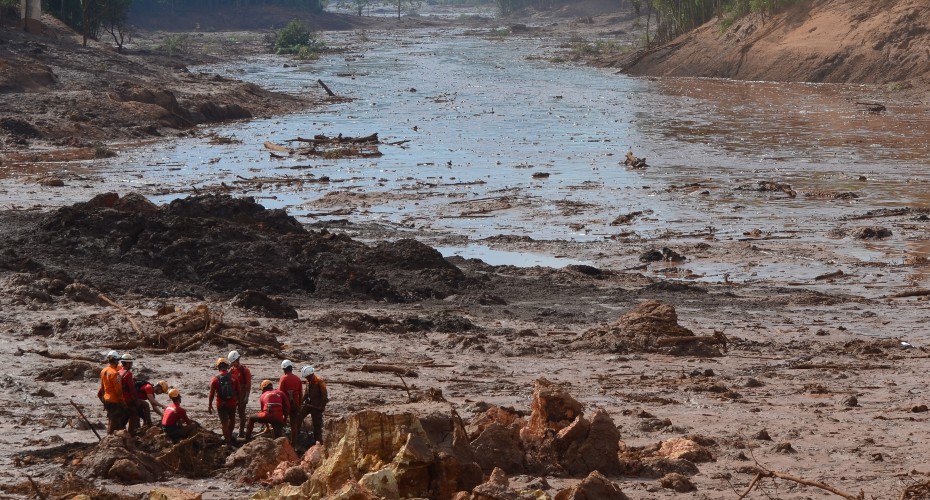Extensive Impact of Metal Mining Contamination on Rivers and Floodplains revealed

Firefighters from Minas Gerais conduct searches following the dam rupture in Brumadinho, Minas Gerais, Brazil Photo reproduced with permission from the Fire Department of Minas Gerais
A groundbreaking study has provided pivotal new insights into the extensive impact of metal mining contamination on rivers and floodplains across the world.
The new research, by an international team of researchers including Professor Karen Hudson-Edwards from the University of Exeter, offers a comprehensive understanding of the environmental and health challenges associated with metal mining activities.
Using a new georeferenced global database of 185,000 metal mines and employing a combination of process-based modelling and empirical testing, the research assessed the global scale of metal mining contamination in river systems and its repercussions for human populations and livestock.
The study, led by the University of Lincoln, modelled contamination from all known active and inactive metal mining sites, including tailings storage facilities – used to store mine waste – and looked at potentially harmful contaminants such as lead, zinc, copper, and arsenic, which are transported downstream from mining operations, and often deposited along river channels and floodplains for extended periods.
The study, published in leading journal Science¸ comes as an estimated 23 million people worldwide are believed to be affected by potentially dangerous concentrations of toxic waste.
Professor Hudson-Edwards, co-author of the study and an expert in Sustainable Mining, said: “As the mining industry moves towards sustainability, protection of the environment and people is more important than ever. Our study provides data and models to inform risk management strategies for river systems that could be affected by mining-related contamination.”
Released against the backdrop of growing demand for metals and minerals to feed the demands of the green energy transition, the new results highlight the widespread reach of the contamination, affecting approximately 479,200 kilometres of river channels and encompassing 164,000 square kilometres of floodplains on a global scale.
According to the findings released today, approximately 23.48 million people reside on these affected floodplains, supporting 5.72 million livestock and encompassing over 65,000 square kilometres of irrigated land. Due to a lack of available data for several countries, the team behind the study believe these numbers to be a conservative estimate.
Various pathways exist for humans to become exposed to contaminants, including from direct exposure through skin contact, accidental ingestion, inhalation of contaminated dust, and through the consumption of contaminated water and food grown on contaminated soils.
This poses an additional hazard to the health of urban and rural communities in low-income countries and communities dependent on these rivers and floodplains, especially in regions already burdened with water-related diseases. In industrialised nations in Western Europe, including the UK, and the United States, this contamination constitutes a major and growing constraint to water and food security, compromises vital ecosystem services, and contributes to antimicrobial resistance in the environment.
“Our new method for predicting the dispersal of mine waste in river systems worldwide provides governments, environmental regulators, the mining industry and local communities with a tool that, for the first time, will enable them to assess the offsite and downstream impacts of mining on ecosystem and human health,” said Professor Mark Macklin, who led the multi-disciplinary, international team behind the research:
“We expect that this will make it easier to mitigate the environmental effects of historical and present mining and, most importantly, help to minimise the impacts of future mining development on communities, while also protecting food and water security.”
Professor Deanna Kemp from the University of Queensland’s Sustainable Minerals Institute, who was part of the team behind the study, called the results “sobering.”
“At a basic level, these findings remind us that mining can cause extensive downstream damage over long periods of time,” Kemp said. “Many people benefit from mining and metals, but we must do more to understand and prevent the negative effects on people who live and work in affected areas.”



